ROOM: The Space magazine is one of the leading magazines on space exploration, technology and industry. At ROOM, we share a common dream – promotion of peaceful space exploration for the benefit of humankind, all while bringing you comprehensive articles on an assortment,a range of interesting topics. Our authors include academics and industry leaders from all over the world, which lets us bring you the newest and accurate information about kepler exoplanet discovery.
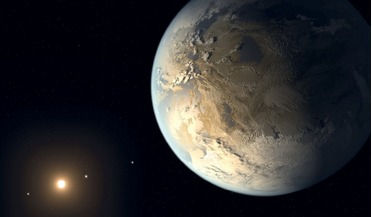 August 2018
Exoplanet census promises radical discoveries
August 2018
Exoplanet census promises radical discoveries
...From the first exoplanet discovery (by Swiss astronomers, Michel Mayor and Didier Queloz) of a half-Jupiter-mass planet orbiting the star 51 Pegasi on a four-day orbit to the remarkable discoveries of NASA’s Kepler space telescope, ...progress has been rapid and surprising. The vast majority of the more than 3,700 known exoplanets are unlike any of the planets in ...
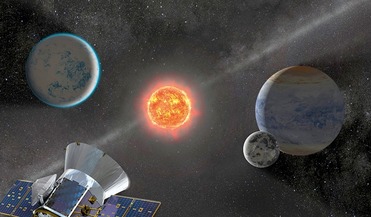 April 2019
Scanning the skies for exoplanets
April 2019
Scanning the skies for exoplanets
... space agency has ever sent into space, Kepler. During its lifetime, Kepler observed an astonishing 530,506 stars and found over 2660 exoplanets. Its discoveries revolutionised the field of exoplanet studies as it revealed a plethora of alien ... left in its current mission, it is very possible that TESS will find the holy grail of exoplanet discoveries before this period ends. “Finding more Earth-sized planets will be very exciting, but finding an ...
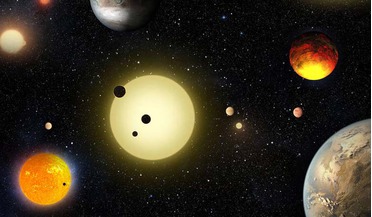 11 May 2016
Kepler scientists announce a major increase in confirmed exoplanet numbers
11 May 2016
Kepler scientists announce a major increase in confirmed exoplanet numbers
...published in The Astrophysical Journal, said “today, we are announcing the discovery of 1284 new planets in the Kepler mission. This is the most exoplanets that have ever been announced at one time. This more than ..., even though at this stage they cannot be claimed as true exoplanet discoveries. In this latest announcement, Kepler scientists have doubled the number of known exoplanets smaller than the size of Neptune in our own Solar System and...
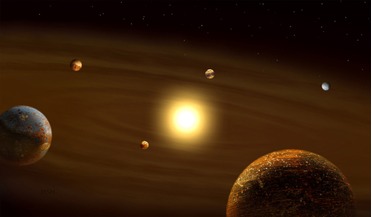 27 July 2019
Hundreds of new planet candidates detected by Kepler
27 July 2019
Hundreds of new planet candidates detected by Kepler
... this news is, TESS is not the only one making substantial discoveries. Although now officially retired, NASA’s first formidable exoplanet telescope – Kepler – has gone one better. Make that a few hundred better... to its new stellar target, Kepler had racked up its 1,000th confirmed exoplanet discovery. Kepler’s K2 mission comprised of 19 ‘campaigns,’ lasting around 80 days each. These new discoveries were all extracted from data collected...
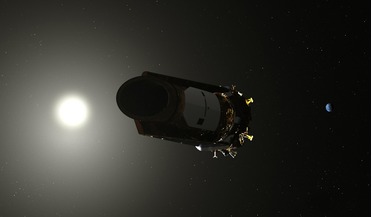 19 November 2018
Kepler officially retires after receiving final "goodnight" commands
19 November 2018
Kepler officially retires after receiving final "goodnight" commands
...spacecraft needs three functioning wheels to continally monitor a star’s brightness for signs of Earth-sized exoplanets, its field-of-view had to be switched roughly every three months to compensate for the .... Although no further observations will take place, Kepler’s legacy still continues. ”We know the spacecraft's retirement isn't the end of Kepler's discoveries," said Jessie Dotson, Kepler's project scientist at NASA's Ames Research Center ...
 October 2019
Are we prepared for SETI discovery?
October 2019
Are we prepared for SETI discovery?
...is no hope of a direct investigation and the new methods can observe only indirect consequences of life on exoplanets. As a result, at present, there is no well-founded and authentic result that proves the existence ... different cultures and societies. It is also the case that people’s reaction to the announcement of a discovery of extraterrestrial life or technology will be very different depending on their age, gender, education, religion, etc...
 November 2018
How many people does it take to colonise an exoplanet?
November 2018
How many people does it take to colonise an exoplanet?
...who want to actually visit in person, the recent discovery of Proxima Centauri b gives some cause for optimism. Orbiting the nearest star to the Sun, this is the closest exoplanet we can find. It is likely to be a... Located at 4.2 light years (40,000 billion km), Proxima Centauri b is almost an ideal destination - as far as exoplanets go. But while this distance may be small by astronomical standards, it remains utterly vast on the human scale. The...
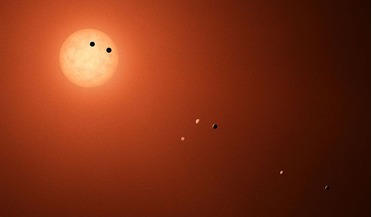 19 May 2017
Exoplanets galore and possibly the next Trappist-1 system?
19 May 2017
Exoplanets galore and possibly the next Trappist-1 system?
It has been a good month for announcing exoplanet discoveries, as two separate teams using the same instrument have found 20 super-Earth to Neptune-mass planets in one ... orbit – and puts tighter constraints on the previously identified neighbouring planets. HD20794 d corresponds to a super-Earth mass exoplanet while the signal at a period of about 330 d probably correspond to a Neptune-like planet located in the habitable zone...
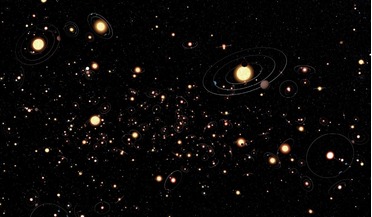 May 2018
PLATO the habitable zone explorer
May 2018
PLATO the habitable zone explorer
...’, and the announcement of 51 Pegasi b heralded a flood of new exoplanet discoveries. Though radial velocities were the method used to find the first exoplanets, they are neither the only method nor the most successful...It will find thousands of planets, giving us a planetary census that builds on our knowledge from NASA’s Kepler, K2 and TESS space missions, and extending it in new directions that were previously inaccessible. Visualisation of ...